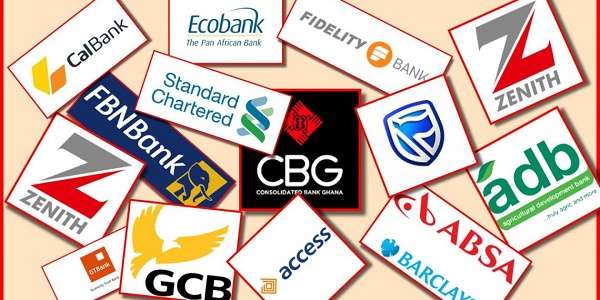Banking Industry: Bank’s stock of NPL increase to GHS 8.9bn; profit-after-tax rise to GHS 2.4bn
According to the Central Bank, asset quality risks moderated in June 2022, attributed to a combined effect of a moderation in the growth in the stock of NPLs as well as a rebound in credit growth from the previous year.
The stock of non-performing loans [NPL] in the banking industry increased by 10 percent to GH¢ 8.9 billion in June 2022, according to the Central Bank in its 107th Monetary Policy Committee Report.
This compares favourably with the NPL growth of 15.1 percent in June 2021.
According to the Central Bank, asset quality risks moderated in June 2022, attributed to a combined effect of a moderation in the growth in the stock of NPLs as well as a rebound in credit growth from the previous year.
The Central Bank notes that, a strong rebound in credit growth was also recorded, with gross loans increasing by 33.3 percent in June 2022, compared to the modest growth of 5.7 percent in the previous year.
These developments led to a decline in the industry’s NPL ratio from 17.0 percent in June 2021 to 14.1 percent in June 2022. The adjusted NPL ratio (excluding the fully provisioned loan loss category) also improved to 3.8 percent from 7.2 percent over the same comparative period.
Notwithstanding the decline in the NPL ratio, the increase in the stock of NPLs within the year indicated that asset quality risks persisted in the sector.
The decline in the industry NPL ratio was most pronounced in the commerce and finance and mining and quarrying sectors, which recorded lower NPL ratios in June 2022 compared with last year.
The NPL ratio of the commerce and finance sector declined from 27.2 percent in June 2021 to 16.4 percent in June 2022, while that of the mining and quarrying sector declined from 13.4 percent to 5.7 percent during the same comparative period.
Three other sectors also recorded improvements in their NPL ratios during the review period: manufacturing (from 17.5% to 12.2%); electricity, water and gas (from 15.2% to 12.8%); and services (from 9.2% to 8.9%).
On the other hand, the agriculture, forestry and fishing and the transport, storage and communication sectors recorded increases in their NPL ratios during the period under review from 26.9 percent to 27.9 percent and from 9.9 percent to 10.4 percent, respectively.
The NPL ratio for the construction sector remained the highest and was unchanged at 34.4 percent between the two periods, indicating that asset quality risks remain elevated in that sector.
In terms of profitability, the industry’s profitability performance was robust during the first half of the year with profit-after-tax of GH¢2.9 billion, representing an increase of 19.8 percent over profits recorded for the same period a year ago (comparative growth rate of 24.0%).
Profit-before-tax also grew by 21.6 percent to GH¢4.4 billion in June 2022, compared to a growth of 32.1 percent in June 2021.
Net interest income growth moderated from 19.4 percent to 12.4 percent during the review period. The slowdown in net interest income growth was on account of a decline in the growth in interest income from 17.6 percent to 15.4 percent and an increase in growth in interest expenses from 13.9 percent to 21.9 percent during the same comparative period.
Interest income growth slowed as a result of the reduction in investments income this year while the higher growth in interest expenses was mainly on account of increased borrowings this year.
Net fees and commissions, on the other hand, recorded a stronger growth of 29.2 percent from 19.6 percent, whereas other income, the smallest component of banks’ income, increased by 98.0 percent from a contraction of 11.8 percent, making up for the decline in net interest income growth.
These developments resulted in the industry’s gross income growth of 22.7 percent during the first half of this year, compared with 15.2 percent in the comparative period in 2021.
Source: norvanreports.com


